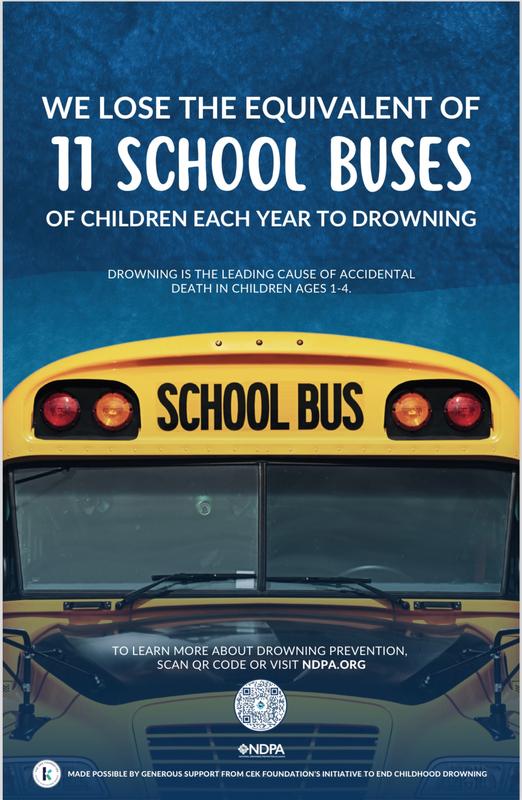| As Summer gets underway and everyone is enjoying the warmer weather outside swimming, it is important to remember the danger associated with this fun summer activity.
According to the National Drowning Prevention Alliance:
• Drowning is SILENT, and can happen is as fast as 30 seconds.
• Almost 70% of childhood drownings happen during non-swim times
• 88% of child drownings occur with at least 1 adult present.
• We lose 10 school buses of children to unintentional drownings each year.
DROWNING IS THE SINGLE LEADING CAUSE of death for children ages 1–4. It remains a top cause of unintentional injury death for older children, teenagers, and adults. While it could happen to anyone at any age, young children are the most vulnerable due in part to their innocent and curious nature. Drowning happens quickly and quietly, so one layer of safety is not enough, multiple layers are necessary to help reduce the risk.
NDPA reminds parents and adults to implement the 5 Layers of Protection to prevent the tragedy of drowning.
• BARRIERS & ALARMS — It's important to use four-sided fencing with self-closing, self-latching gates, pool safety covers, and alarm systems, to help prevent children and unauthorized adults from accessing water unsupervised.
• SUPERVISION — Stay vigilant and aware of your surroundings with close, constant, and capable adult supervision from a designated water watcher or lifeguard anytime children are in or around water.
• WATER COMPETENCY — Every child and adult should be equipped with the skills to protect themselves in water by learning and enhancing their basic water safety skills to reduce the risk of drowning and aquatic-related injuries.
• LIFE JACKETS — When used appropriately, life jackets protect you when you are not expecting to be in the water, especially around open water. Ensure your life jackets are tested & approved by the USCG.
• EMERGENCY PREPARATION — Knowing how to prepare for an emergency with CPR training with rescue breaths and basic water rescue skills can make the difference between life and death. Have a phone available and ready to call 911.
***LAYERS OF PROTECTION — Water safety isn’t just during swim time. Each layer should be used together when in or around water to help reduce the risk of drowning. You never know which layer will save a life.
For more information and resources, visit NDPA at the below link. |
